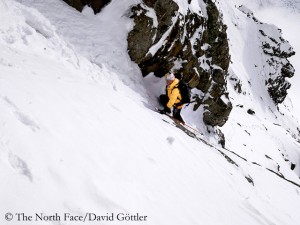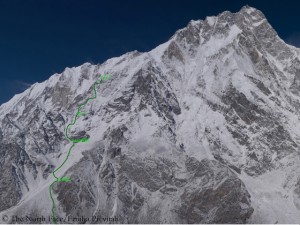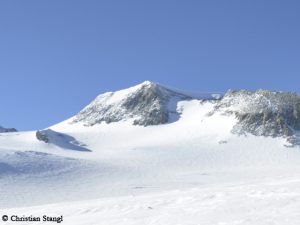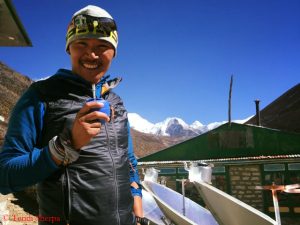David Goettler: “Step by Step”
For David Goettler, it is the first winter expedition to an eight-thousander. And then actually to Nanga Parbat! The 8125-meter-high mountain and K 2 are the only two remaining 8000ers which are unclimbed in the cold season. The 35-year-old German has teamed up with the Italians Simone Moro and Emilio Previtali. They are trying to reach the summit via the Schell route, starting on the Rupal side of Nanga Parbat. Moro did three first winter ascents of 8000ers (Shishapangma in 2005, Makalu in 2009, Gasherbrum II in 2011). I get David at basecamp where the team is recovering after a few days on the mountain.
David, how do you spend your time?
Reading, writing emails, giving interviews. In addition we are enjoying good food three times a day. Days are passing by amazingly fast. In my tent I am also doing some yoga exercises in order not to degenerate completely.
It is your first winter expedition to an eight-thousander. You have been now on Nanga Parbat for three weeks. How does it feel, everything as expected?
It feels good! I must say, up to now we had incredibly good weather. But I ‘m sure the “real” winter will arrive, and then it will be turning anything but funny.
Darek Zaluski from Poland, an experienced winter climber on 8000ers, said that in winter you extremely lose power the more time you are spending at high altitude. Until now, have you found a difference on this point compared to summer expeditions?
No, so far it feels like in summer. We were up to 6400 meters and we were able to work and sleep well up there. Until now I don’t see any difference. But as I said – I don’t want to sound arrogant – it is simply due to the fact that until now the weather god has been kind to us.
You had already met Simone Moro before but never climbed with him in a rope team. How well do you fit together?
It is as I expected. We work great as a team. If we have to take decisions, we have the same positions and views. It’s really relaxed and nice to be out with him. We are able to motivate each other. Thus, I think, at least concerning our team everything will be fine.
Just before Christmas climbers from Poland pitched their tents on the Rupal side. Two expeditions on the same route, does it work?
It works fantastically! We are cooperating, sometimes our Polish friends fixed the ropes, sometimes we did. The same applies to tracking and supplying of fixed ropes or other material. Of course, initially we were not as well acclimatized but now we are on the same level, and we are able to keep up with them. Yesterday we met for dinner, and we had a lot of fun. I think that’s the beauty of winter climbing: We all work together and help each other.
The Austrian Hanns Schell and his comrades, who in 1976 opened the route that you have chosen, said that the lower parts up to Camp 2 were the most dangerous of the whole ascent? How did you experience this section?
I think they were right. We have now fixed the route up to 6400 meters, and it seems that in the upper parts it’s going to be less technically demanding. But of course we have still a long way to go if we want to reach the summit. Step by step, this is our motto. Up to 6400 meters, the route is impressively direct and steep. I really like that. You can climb many vertical meters in short time, both in ascent and descent.
Ralf Dujmovits has abandoned his expedition on the Diamir side due to the high risk of avalanches and icefall. What about the situation on your side of the mountain?
Thank God, on our side it’s not as dangerous. We have to take care because of rockfall until we arrive on the ridge at 6000 meters, but it’s not so bad. After snowfall, as we have just now, we have to beware of avalanches in the couloirs in the lower parts of the route. But there are no large ice avalanches threatening us for a long time.
You were now at 6400 meters, about 1700 meters are still missing to the summit. A long way. Could you already watch the conditions in the upper parts?
The wind has done its job. We saw in parts almost black, rock-hard, bare ice. This is certainly the greatest challenge up there. But otherwise it looks pretty good. We were still not able to take a glance at the other, the Diamir side. Therefore we can only hope that we will find there good conditions.
When we met in December, before the expedition, you said that the chance to succeed was between 15 to 20 percent. Are you now more optimistic?
I maintain to estimate our chance as being low. So I won’t be so disappointed if it doesn’t work. We have still a very long way to go, even if we have made good progress up to now. We will see – or as people are saying here: Inshallah!










